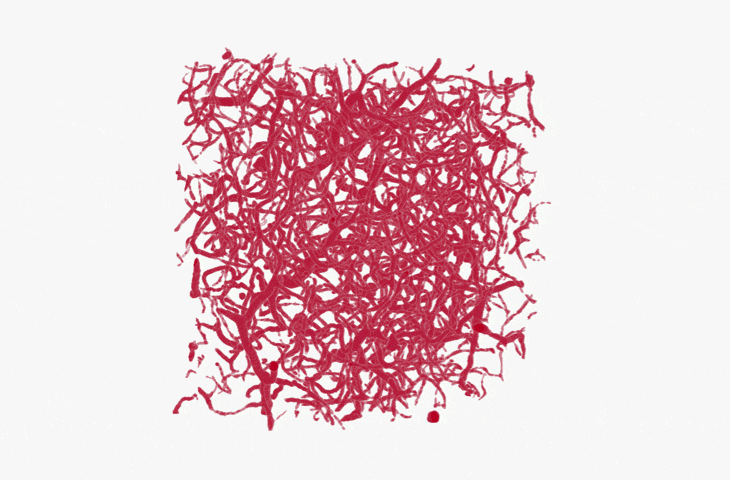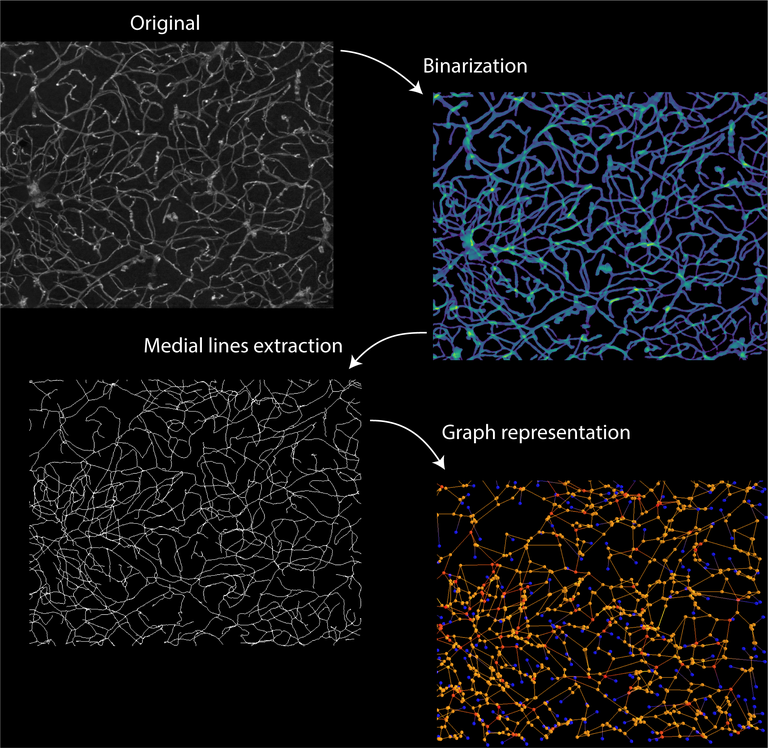Blood Vessels
Blood vessel detection and characterization

The characterization of blood vessels is a fundamental task in many biological areas, with applications going from the clinical analysis of coronary angiographies to current researches on the molecular mechanism of ailments such as stroke or dementia. In the past, properties such as vessel length, radius or number of bifurcations have been studied in either a qualitative fashion or with substantial manual labor. Recently, with the expansion of multidisciplinarity in science, biologists started working closely with computer scientists to define more robust, unbiased, quantifications of blood vessel systems.
Our interest lies in developing and improving methodologies for the identification and characterization of blood vessel networks from microscopy images. Currently, our major framework for this task involves four main steps: 1) segmentation, 2) medial axis identification, 3) conversion into a graph structure and 4) definition of robust properties to characterize the blood vessel system.
Please visit the project's github page for an overview of the framework.

Selected publications
- Ouellette, Julie, Xavier Toussay, Cesar H. Comin et al. "Vascular contributions to 16p11. 2 deletion autism syndrome modeled in mice." Nature Neuroscience 23, no. 9 (2020): 1090-1101.
- da Silva, Matheus V., Julie Ouellette, Baptiste Lacoste, and Cesar H. Comin. "An Analysis of the Influence of Transfer Learning When Measuring the Tortuosity of Blood Vessels." arXiv preprint arXiv:2111.10255 (2021). https://arxiv.org/abs/2111.10255.
- Lacoste, Baptiste, Cesar H. Comin, Ayal Ben-Zvi, Pascal S. Kaeser, Xiaoyin Xu, Luciano da F. Costa, and Chenghua Gu. “Sensory-related neural activity regulates the structure of vascular networks in the cerebral cortex.” Neuron 83, no. 5 (2014): 1117-1130.
- Kur, Esther, Jiha Kim, Aleksandra Tata, Cesar H. Comin, Kyle I. Harrington, Luciano da F Costa, Katie Bentley, and Chenghua Gu. “Temporal modulation of collective cell behavior controls vascular network topology.” Elife 5 (2016): e13212.